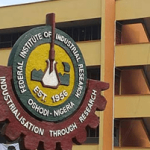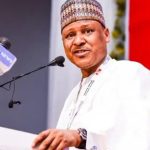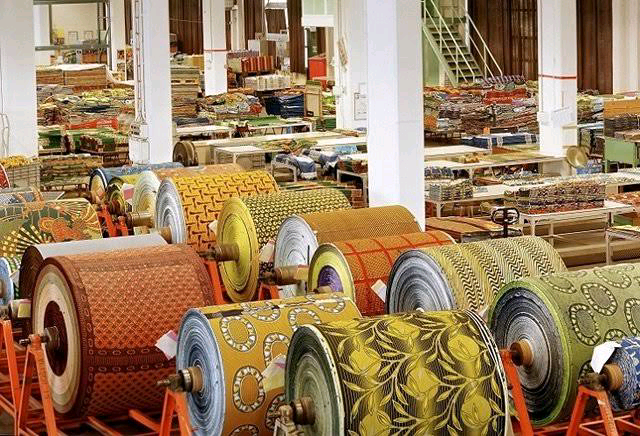As Nigerian textile sector struggles to re-enact its lost glory, the current deal brokered by ARISE IIP, the pan-African developer and operator of industrial parks, with African Export-Import Bank (Afreximbank), and Rieter, the world’s supplier of systems for manufacturing yarn from staple fibres in spinning mills, may become another opportunity for a positive trajectory for the country and Africa in general.
Attracting the attention of the funding partners, however, depends on a number of criteria including power and gas availability, textile parks with standard infrastructure or equity contribution. Training centres will also be established in selected countries to develop and improve skill levels.
According to a report released during the week, the partnership will spearhead the “Africa Textile Renaissance Plan” – a transformative initiative aimed at revitalising the continent’s textile sector.
This ambitious project will leverage ARISE’s extensive network of industrial parks to support a new era of textile manufacturing in Africa. In order to facilitate the implementation of the Africa Textile Renaissance Plan, Afreximbank, Arise IIP and Rieter AG signed a framework agreement on October 14, 2024.
The framework agreement outlines the collaboration to establish 500,000 metric tons of African cotton transformation capacity over the next three to five years, supported by $5 billion in financing.
The Africa Textile Renaissance Plan aims to achieve the following key objectives: Establish 500,000 metric tons of African cotton transformation capacity over the next three to five years, with potential expansion of an additional 500,000 metric tons; Localise machine repair expertise in Africa; Create up to 500,000 jobs; Reduce Africa’s annual textile imports ; Boost exports to the US under the African Growth and Opportunity Act (AGOA), focusing on full value addition within the continent and to export to the rest of the world; Develop a strong financing structure to support capacity building.
The report said the partnership aimed to secure financing of textile projects, streamlining the process through: Standardised loan documentation and security packages; Expedited two-month application process, and Standardised business plan templates.
To foster long-term growth, Rieter has committed to gradually establishing a manufacturing presence in Africa subject to commercial viability, including the setup of a repair and maintenance facility in ARISE’s industrial park in Benin, establishment of spare parts warehousing; phased introduction of machine assembly operations.
Gagan Gupta, CEO and Founder of ARISE IIP, expressed his enthusiasm for the project. He said: “The Africa Textile Renaissance Plan represents a significant milestone in the continent’s industrial development.
I’m convinced that this initiative will not only boost local manufacturing and create thousands of jobs but also position Africa as a global leader in sustainable textile production.”
Prof. Benedict Oramah, President and Chairman of the Board of Directors of Afreximbank, described the Africa Textile Renaissance Plan as a ‘game-changer’ for African trade. He remarked: “By transforming Africa’s cotton into high-value textile products, we are not only driving industrialisation but also reducing dependence on imports while building a competitive export base.
“This partnership complements our ongoing efforts, such as the transformative change we are spearheading in Africa’s Cotton-4 plus (C4+) countries, alongside other partners. It underscores Afreximbank’s unwavering commitment to industrialisation and export development.”
Thomas Oetterli, Rieter Group CEO, said: “We are thrilled to support this important initiative with our commitment, expertise and consulting knowledge. We are convinced that the Africa Textile Renaissance Plan marks an important starting point for the future development of the textile industry in Africa.”
Recall that the Federal Government recently revealed that the neglect of the textile industry had cost Nigeria more than $30 billion spending in importation of textile raw materials.
Specifically, the government regrets that the amount of money would have remained in the country to help enhance foreign exchange (FX) liquidity. Besides, data provided by the National Bureau of Statistics (NBS) had revealed that the country moved from 200 textile factories to 20 and from over 500,000 workers to 20,000 workers.
The NBS report linked high imported textile raw materials, influx of cheaper textile products from Asia, particularly China, smuggling, importation of substandard fabrics, lack of reliable power supply and poor infrastructure, poor agricultural practices and competition as reasons for the downturn in the country’s textile industry.
The Senior Special Assistant (SSA) to the President on Agribusiness & Productivity and Housing, Dr. Kingsley Uzoma, who made this known in an interview, said that President Bola Tinubu was really keen on revitalising the nation’s economy by diversifying revenue base, foreign exchange (FX) base, and aggressively improving the country’s non-oil sector, like cotton, cocoa, cashew, rubber, all the primary export in order to reactivate, rejuvenate and catalyse economic growth.
To kickstart the revival of the country’s textile industry, Dr. Uzoma explained that the Vice President, Kashim Shettima, had hosted a number of stakeholders in the textile industry, including the Governors of Lagos and Imo states respectively, at the Presidential Villa on how best to go about revamping of the country’s textile industry, which is ultimately begging for Presidential attention.
The SSA to the President said: “Cotton was a major employer of labour and major contributor to our GDP before we miscalculated. “Prior to the Structural Adjustment Programme (SAP), cotton, I will used northern Nigeria as an example, they had 1.2 million cotton farmers.
We had 700,000 Nigerians employed directly and indirectly in the textile and garment industry and we are feeding the Nigerian markets and the subregional markets in Benin.
“The rest of them that used to come to Nigeria, we used to hear from Aba, that people come from Gabon, from Equatorial Guinea, from different countries in Africa to purchase garment and also from Kano.
“That is why we have the major garment markets in Kano, Kanchinfara and the rest of them. That was why they were established. They weren’t established today. They were established to serve the Nigerian markets and also the sub-regional markets.”








